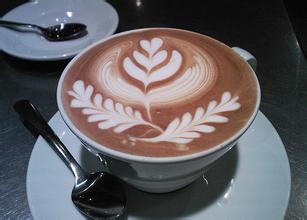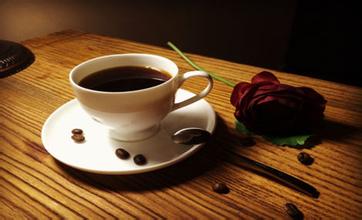Jamaica Wallenford Manor Coffee Grind Characteristics Taste Variety Flavor Description
Jamaica is one of the small coffee-producing regions in the world, with an annual harvest of about 40000-60 kg / sack (Jamaican Blue Mountain coffee is actually shipped away in 70kg barrels, and they are the last country to still use this traditional packaging method, but they produce according to 60kg/ sacks, as that is the international standard for measuring coffee production). Compare Brazil, the world's largest exporter of coffee, with an annual production of 30000000 bags to 60 kg per sack.
The Japanese have invested heavily in the blue mountain coffee breeding area of Jamaica and have won 90% of the annual production. The rest of the world must bid for the remaining 10%, or 3500 barrels. The real Blue Mountain Coffee has a unique taste, making it the most expensive coffee in the world. Its demand is very high, so some of the market is in short supply.
Unique growth conditions
Blue Mountain is located in the coffee belt, the highest peak 2256 meters above sea level, is the highest peak in the Caribbean. It has fertile volcanic soil, fresh air, no pollution, humid climate, abundant rainfall in the Blue Mountain area, year-round fog and low temperature, and the average temperature is about 20 ℃. All these constitute a good growing environment for Blue Mountain Coffee. Coffee grown in this natural environment has the characteristics of all good coffee, not only full-bodied and mellow taste, but also because of the perfect combination of sweet, sour and bitter coffee, so there is no bitterness at all, only moderate and perfect sour taste.
The unique growth conditions give birth to the unique flavor of Blue Mountain Coffee and create a unique slightly sour taste, but it is not exciting or uncomfortable at all. It also makes it one of the "gourmet coffee".
The world-famous Blue Mountain Coffee comes from the Blue Mountains of Jamaica. The Blue Mountains lie in the eastern part of the island of Jamaica, with the highest peak of 2256 meters above sea level, which is the highest in the Caribbean. It was so famous because the British soldiers who had arrived in Jamaica saw the mountain shrouded in blue light and exclaimed, "look, the blue mountain!" From then on, it was named "Blue Mountain".
In fact, the Blue Mountains are because the island of Jamaica is surrounded by the Caribbean Sea. Whenever a sunny day, the brilliant sun shines on the sea, the mountains are reflected by the blue sea and shrouded in a faint blue atmosphere, ethereal and ethereal.
The unique flavor of Blue Mountain Coffee is related to its unique geographical location and climatic conditions. The Blue Mountain Coffee Belt lies between 25 degrees north latitude and 25 degrees south latitude. There is fertile new volcanic soil, fresh air, no pollution, rainy all the year round and a big temperature difference between day and night. Most importantly, every afternoon, clouds cover the top of the mountain, which not only shades the coffee trees naturally, but also brings abundant water vapor, which makes the taste and aroma of Blue Mountain coffee outstanding.
Only coffee grown in the Blue Mountain area above 2000 feet above sea level can be called Blue Mountain Coffee. Coffee beans from lower mountain areas can only be called "Jamaican alpine coffee". No matter where the same coffee tree species are planted in Hawaii or Kenya with a similar climate, they can not produce the unique flavor of blue mountain coffee beans.

Important Notice :
前街咖啡 FrontStreet Coffee has moved to new addredd:
FrontStreet Coffee Address: 315,Donghua East Road,GuangZhou
Tel:020 38364473
- Prev

Characteristics of Coffee grindability in Cliff Manor, Jamaica introduction of fine coffee in producing areas
The secret of why Blue Mountain coffee tastes pure: their coffee trees are all grown on rugged hillsides, and the picking process is so difficult that non-local skilled female workers are simply unable to do it. It is very important to choose the right ripe coffee beans when picking. Immaturity or ripeness will affect the quality of the coffee. The picked coffee beans are shelled on the same day, and then let them ferment for 1218 hours.
- Next

Introduction to the characteristics of Coffee Grinding degree treatment in Joy Manor, Nicaragua
In many countries, coffee production will be seriously affected for political reasons. Nicaraguan coffee industry is no exception. The 1979 revolution forced coffee planters to flee to Miami. A period of indecision followed, when the government considered whether to redistribute land (including many plantations), which led to a shortage of coffee and a decline in production since the early 1970s
Related
- Does Rose Summer choose Blue, Green or Red? Detailed explanation of Rose Summer Coffee plots and Classification in Panamanian Jade Manor
- What is the difference between the origin, producing area, processing plant, cooperative and manor of coffee beans?
- How fine does the espresso powder fit? how to grind the espresso?
- Sca coffee roasting degree color card coffee roasting degree 8 roasting color values what do you mean?
- The practice of lattes: how to make lattes at home
- Introduction to Indonesian Fine Coffee beans-- Java Coffee producing area of Indonesian Arabica Coffee
- How much will the flavor of light and medium roasted rose summer be expressed? What baking level is rose summer suitable for?
- Introduction to the characteristics of washing, sun-drying or wet-planing coffee commonly used in Mantenin, Indonesia
- Price characteristics of Arabica Coffee Bean Starbucks introduction to Manning Coffee Bean Taste producing area Variety Manor
- What is the authentic Yega flavor? What are the flavor characteristics of the really excellent Yejasuffi coffee beans?

